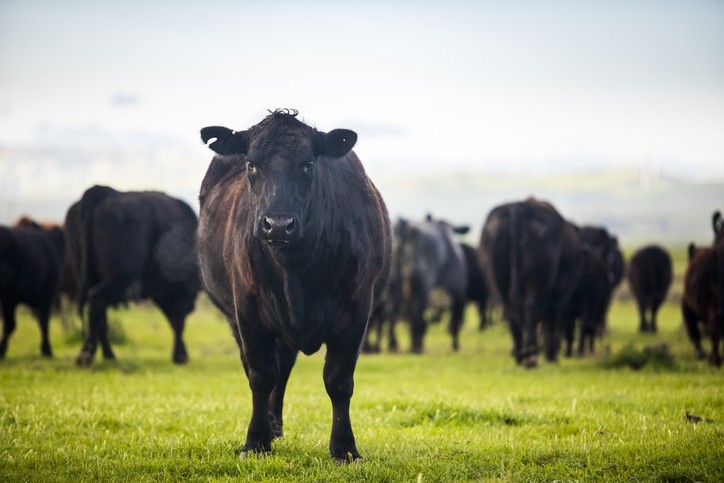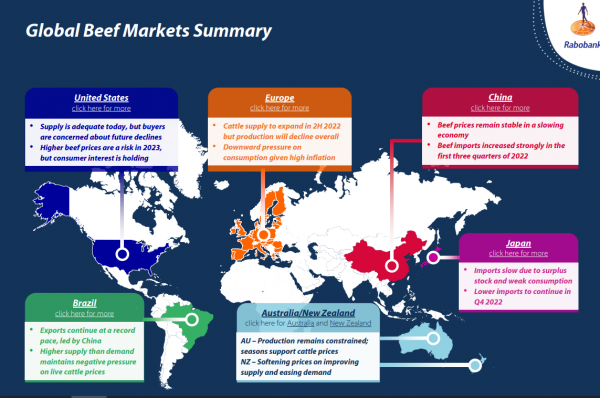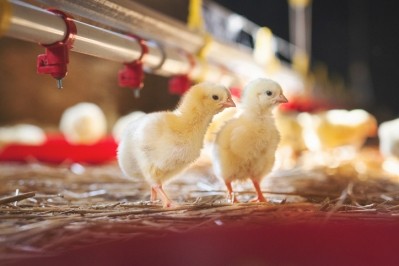US beef production set to contract

Production in Europe and the US in Q1 2023 is expected to shrink, while production in Australia, Brazil, and China should be flat or should increase. New Zealand (NZ) shows a year-on-year production decline for Q4 2022 but rising production for Q1 2023. “Overall, total production volumes for key markets in Q4 2022 and Q1 2023 will likely be similar to levels a year ago.”
US shrinkage
The drop off in US production will likely influence the market in the coming years, according to Rabobank analyst, Angus Gidley-Baird.
US beef production will begin a four-year decline starting next year, forecast the latest Rabobank global beef quarterly. US production should fall by 3% in 2023, with additional annual declines of 2% to 5% possible into 2026. “That is the potential loss of 400,000 to 500,000 metric tons of beef production annually.”
Previous periods of contraction in the beef sector showed that US retailers and restaurants look to the global market to fill the void, noted the indsutry watchers. Which countries could possibly deliver, if at all, asks the quarterly.
“While neighbors Mexico and Canada, the two largest suppliers, are likely to pick up some slack, Canada is going through its own liquidation phase and likely limited in what it can supply. Australia and New Zealand, the third- and fourth-largest US suppliers, are the logical next options. But NZ production is expected to be limited – beef production is forecast to decline 4% between 2023 and 2025. Australia’s recovery from its own liquidation phase is being drawn out with some questions as to whether it will have the cattle available to produce the same volumes it has done in the past.
“Europe is not a big supplier to the US, and we expect EU-27+UK beef production to continue its structural decline at an annual rate of about 0.5% in the 2023 to 2025 period as the dairy herd further contracts.
“This leaves South America, which has available volume but lacks the trade access needed to fill the sizeable gap in US production. Brazil’s production is expected to grow over the coming years, but we expect production in Argentina to decline then plateau. Combined, these two major South American exporters will not increase production enough to offset the drop in the US, even if trade arrangements are changed to increase exportable volumes from South America.”
In summary, the analysts predict that the decline in US beef production won’t be met by boosted output in other major exporting countries. “Consumers will need to pay to access available supply, given the supply pressures in many markets. This could create a strong upside to prices and the redistribution of trade volumes.”
Chinese market
In China, beef retail demand remains strong, but foodservice is still under pressure, found the analysts.
That country’s beef imports continue to increase on a year-on-year, they added.
“Strong imports are related to low domestic production, which has been impacted by Covid restrictions and rising feed costs. Imports declined in September from the previous month but remained at historically high levels. Brazil remains the largest supplier of China’s imports, shipping 736,000 metric tons in the first nine months of the year, accounting for 38% of China’s total beef imports.”
In the EU, beef fattening margins improved through Q3 2022, tracking around the five-year average, noted the team.
They maintain that this trend would indicate that cattle prices have caught up with the increase in production costs. “Producers’ margins may deteriorate in Q4 2022, though, due to increased cattle supply, higher feed costs through the winter, and a shrinking consumer appetite amid high inflation.”








